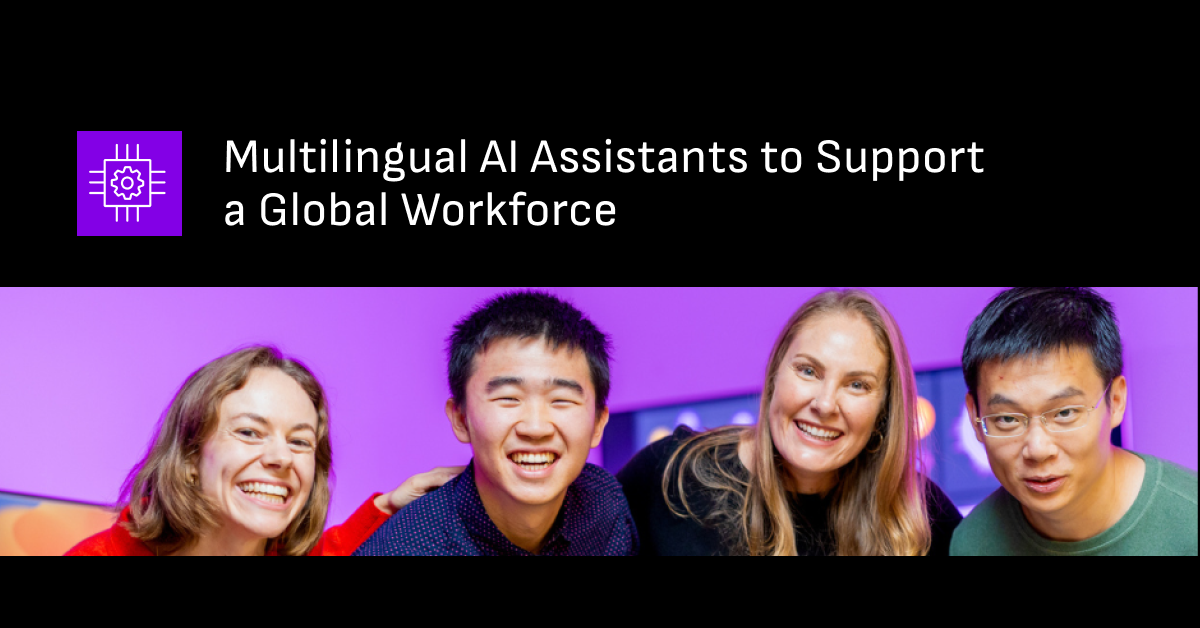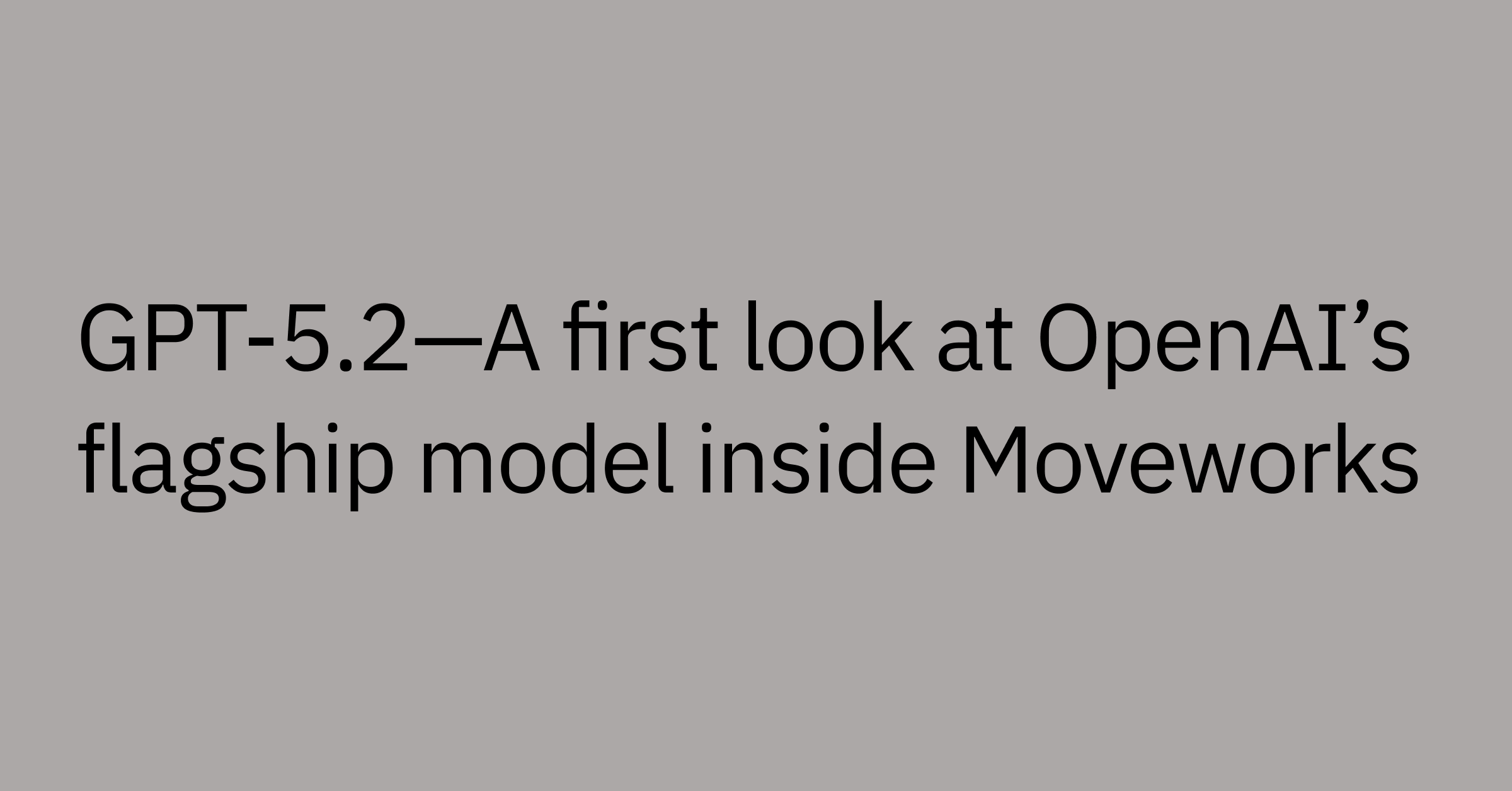Table of contents
A software engineer in Tokyo needs help resetting their VPN access at 3am your time. Meanwhile, a new hire in São Paulo is struggling to understand benefits enrollment in Portuguese. And over in London, your team is dealing with a facilities issue due to a miscommunication between American and British English terminology.
Language barriers like these are a daily challenge for global teams. And while your company may span continents, your support shouldn't feel distant or disconnected to employees.
The reality, though, is that many organizations often struggle to provide consistent, high-quality support across languages and time zones. Communication gaps create friction, cultural nuances get lost in translation, and employees feel frustrated when they can't get help in their preferred language.
The impact isn’t just anecdotal. According to a Language Industry Market Report by Slator, companies that actively work to resolve language barriers and communication challenges see 30% higher project efficiency and 25% fewer project delays.
When employees can't communicate naturally with support systems, productivity suffers, satisfaction drops, and your global workforce feels anything but unified.
To bridge these gaps at scale, many organizations are turning to multilingual AI assistants.
At a glance: Best multilingual AI assistants for enterprise support
Company | Primary Use Case | Category |
Moveworks | Enterprise-wide employee support automation | Enterprise Support Automation |
Kore.ai | Build-your-own virtual assistants for complex enterprise workflows | iPaaS and Business Process |
Glean | Enterprise search and knowledge discovery across languages | Knowledge Management and Internal Search |
Aisera | Automated service desk resolution with multilingual NLP | IT Service Management |
Microsoft Copilot | Multilingual productivity support within Microsoft 365 ecosystem | Productivity and Development |
Why global support needs more than just translation
Supporting a global workforce isn't just about translating words — it is about understanding context.
Think about how your teammates in different regions communicate. An engineer in Germany might describe a technical issue differently than their counterpart in India.
HR terminology also varies widely between countries. Even something as simple as requesting time off has different cultural contexts and expectations across regions.
For example, in the US, employees might ask for “PTO” or “vacation days,” while in the UK, they may refer to it as “annual leave.” In Japan, employees might be less likely to request time off directly due to cultural expectations around presenteeism — meaning the way requests are phrased, or whether they’re even made, can vary significantly.
Where traditional chatbots and assistants fall short
Traditional chatbots and basic artificial intelligence (AI) assistants often fall short because they rely on simple word-for-word translation. They miss the broader context — cultural nuances, technical jargon, and company-specific terminology — which may lead to inaccurate or irrelevant responses.
Advanced multilingual AI assistants, on the other hand, use natural language processing (NLP), a form of artificial intelligence that understands meaning and intent across languages, instead of just translating words.
These systems adapt to regional dialects, understand workplace context, and learn from past interactions to provide increasingly accurate support over time.
Multilingual support shouldn't be an afterthought
When employees can't get help in their native language, the impact can ripple throughout your organization.
- A new employee in France may struggle with English-only onboarding materials, missing important information about company policies.
- A facilities issue in your Japan office may go unreported because the ticketing system only accepts submissions in English.
- Critical security updates may be ignored if employees don't fully understand the instructions.
These aren’t isolated incidents — language barriers can create deeper organizational issues. They might reinforce silos between regional offices or even make some employees feel excluded from important processes and communication. Language barriers may also prevent you from fully leveraging the skills and insights of your global talent pool.
Providing multilingual support is more than a convenience. It demonstrates respect for your employees' diverse backgrounds and shows that you value their contributions regardless of their location or native language. This can lead to a more inclusive workplace where everyone has equal access to resources and support.
The business impact is equally significant. When employees are able to communicate naturally with internal support systems, you see faster resolution times, reduced IT workloads, and a better, more engaging employee experience organization wide.
5 best multilingual AI assistants for enterprises
1. Moveworks — Enterprise-ready support for your employees in their language
Moveworks AI Assistant delivers enterprise-grade multilingual support by understanding how employees actually communicate — not just translating their words.
Rather than simply translating, the multilingual support solution uses advanced machine learning (ML) models trained on enterprise support conversations to understand context, intent, and industry-specific terminology in over 100 languages.
The platform is able to resolve common issues like password resets, software access requests, and policy questions — all in employees’ preferred languages.
Key features include:
- Automatic language detection
- Natural conversation flow without language switching
- On-the-fly translation of knowledge articles and resources
- Support across IT, HR, finance, and many other departments
- Pre-built integrations with major enterprise systems
Ideal use case: Moveworks is purpose-built for large enterprises that need to support diverse, global workforces without expanding their support teams. Its ability to handle complex, multi-step requests in 100+ languages makes it especially valuable for organizations with employees in multiple countries.
See how Moveworks can streamline your multilingual support for your global workforce.
2. Kore.ai — Build-your-own virtual assistants for complex enterprise workflows
Kore.ai offers a platform for creating custom virtual assistants that can handle business processes in over 100 languages. The platform's strengths lie in its flexibility and customization options, allowing developers to build bots tailored to their specific workflows, terminology, and language requirements.
Key features include:
- Visual bot builder with multilingual capabilities
- Custom language model training
- Support for voice and text interactions
- Enterprise-grade security and compliance
Ideal use case: Organizations that need highly customized virtual assistants for specific departments or workflows, especially those in regulated industries.
3. Glean — Enterprise search in your team's language
Glean specializes in enterprise search, helping employees find information across all company systems regardless of language barriers.
It uses AI to understand customer support queries in different languages and delivers relevant results from data sources, including documents, conversations, and knowledge bases within your organization.
Key features include:
- Cross-language search capabilities
- Personalized results based on user context
- Integration with 100+ enterprise applications
- Real-time indexing of company data
Ideal use case: Organizations with extensive documentation and knowledge repositories struggling with information siloed across different language groups.
Pricing: Subscription-based pricing dependent on company size and data volume.
4. Aisera — Automated service desk resolution with multilingual NLP
Aisera combines traditional service desk functionality with AI-powered automation, offering IT service management support across 100+ languages. The platform focuses on automating common service desk tasks while maintaining the ability to escalate more difficult issues to human agents.
Key features include:
- Automated ticket classification and routing
- Self-service resolution for common issues
- Integrations with major ITSM platforms
- Predictive analytics for proactive support
Ideal use case: IT departments looking to automate service desk operations across multiple regions while maintaining consistent service quality.
5. Microsoft Copilot — Multilingual productivity support inside the Microsoft 365 ecosystem
Microsoft Copilot brings AI assistance directly into the Microsoft 365 suite, offering support in over 40 languages for productivity tasks.
Copilot's deep integration with Microsoft applications makes it well-suited for organizations already invested in the Microsoft ecosystem. It can help employees navigate applications, generate content, and complete tasks in their preferred languages.
Key features include:
- Native integration with Word, Excel, PowerPoint, and Teams
- Real-time translation during meetings
- Content generation in multiple languages
- Context-aware suggestions based on user activity
Ideal use case: Organizations that use Microsoft 365 as their primary productivity platform and are looking to enhance global employee efficiency.
How to compare multilingual AI assistants for the enterprise
It’s important to weigh your options carefully and choose the multilingual AI assistant that fits your team's workflows, language needs, and growth plans. As you evaluate each platform, look specifically for the capabilities that truly impact global support.
Features that make an AI assistant truly multilingual
Full multilingual capability goes beyond basic translation. The best platforms understand exactly what users are asking, regardless of what language they’re using.
- Natural language understanding (NLU) helps AI grasp context and intent across languages, not just literal translations. For example, the system should understand that "I can't log in" means the same thing whether expressed in English, Spanish, or Mandarin.
- Automatic language detection identifies the user's language without manual input, maintaining conversation flow for a seamless user experience.
- Machine learning enables AI to learn from interactions and pick up on regional differences in how people communicate and do business, like when to use formal or casual language.
Breadth and quality of language support
You want a solution that supports a wide variety of languages — but more importantly, one that includes the languages your employees actually speak.
Some platforms are great with common languages but may struggle with more niche ones. Others might support multiple languages on the surface but fall short when it comes to actually understanding business terms or regional dialects.
Be sure to check whether the platform you're reviewing can handle:
- Technical and business terminology in different languages
- Regional variations (e.g., Brazilian Portuguese vs. European Portuguese)
- Mixed-language conversations where users switch between languages
Quality and consistency of translation
Translation quality directly impacts user trust and adoption. Poor translations equal frustrated users — and can lead to misunderstandings with real consequences.
Test how well each platform handles:
- Complex, multi-step requests
- Industry-specific terminology
- Common phrases and everyday expressions
- Maintaining context across conversation turns
Consistency matters too. The same term should ideally be translated the same way throughout the conversation and across different interactions.
Security and compliance across regions
Running global operations means dealing with a mix of data protection rules and compliance requirements.
Make sure that your chosen solution:
- Complies with regional data protection laws (GDPR, CCPA, etc.)
- Offers data residency options for sensitive information
- Provides audit trails for compliance reporting
- Maintains security standards across language interactions
Scalability across languages, teams, and tools
Your multilingual AI assistant should be able to grow with your organization — across geographies, departments, and tech stacks. Look for:
- How easily you can add new languages as you expand globally
- Whether the system maintains performance as usage scales
- Integration capabilities with your existing and potential future tools
- Support across different departments and use cases (IT, HR, finance, facilities)
Integration flexibility
Ideally, your AI assistant should be able to connect across your existing technology stack, including:
- ITSM platforms like ServiceNow or Jira
- HR systems like Workday and SAP for employee data and processes
- Communication tools like Slack, Microsoft Teams, and email
- Internal knowledge bases and documentation systems
Strong integration capabilities make it easier to deliver consistent multilingual support at every employee touchpoint.
Time to value and ease of implementation
The complexity of implementation can vary quite a bit between platforms. Some solutions offer out-of-the-box multilingual capabilities, while others require a lot more configuration and training to get going.
So you should also look at:
- How quickly you can deploy basic functionality
- The level of technical expertise required for setup
- Long-term maintenance and optimization needs
- Availability of onboarding, support, and training resources
Unlock global productivity with a multilingual AI assistant
The right multilingual AI assistant can completely change how your global organization works by helping:
- Break down language barriers
- Build more inclusive workplaces
- Make sure every employee gets the support they need, whenever they need it
Moveworks’ powerful AI Assistant, come with a sophisticated understanding of enterprise language patterns and ability to provide native experiences in over 100 languages – with 98% language detection accuracy
Unlike many solutions that only translate, Moveworks helps you provide truly multilingual support. It is able to:
- Give seamless support in 100+ languages: Employees can get instant help in their native language — no training needed. Moveworks is able to adapt on the fly, even when conversations switch languages.
- Understand how your team works: The platform goes beyond translation to interpret enterprise-specific language, including room names, email groups, and policy terms.
- Deliver answers instantly: Moveworks surfaces your resources — like knowledge snippets in the correct language — the moment they’re needed, so employees don't have to dig for help.
See how intelligent multilingual support can unify your global workforce — learn how Moveworks makes it possible.



